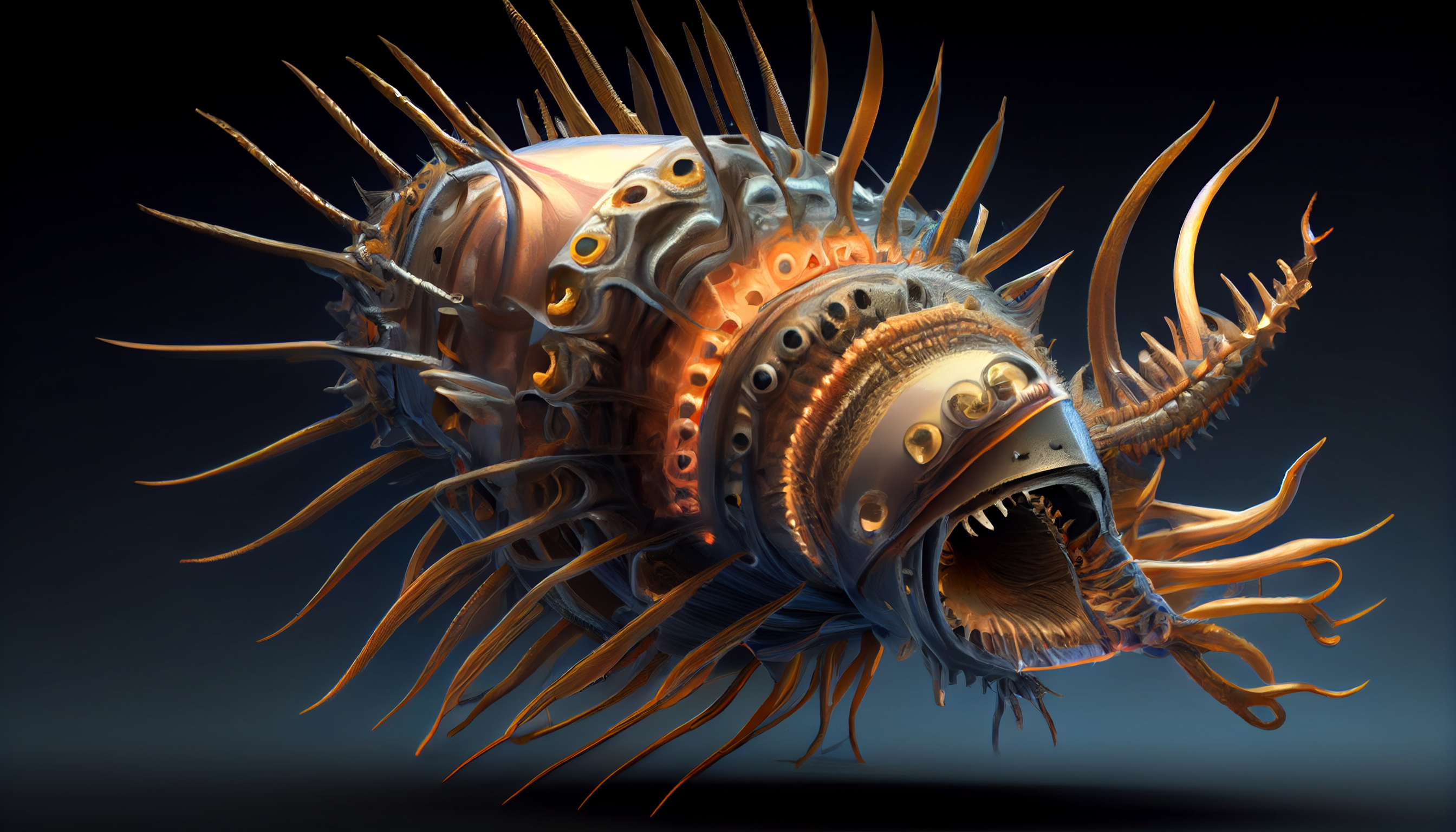Kromazon
The Xeno-Kromazona Makistasoensis, commonly known as the Kromazon, is an extraterrestrial species that inhabits the vicinity of the Makistaso black hole. These creatures are unique in that they are one of the few known lifeforms that exist in the vacuum of space.
The Kromazon has a cylindrical body that is approximately 20 meters in length and 5 meters in diameter. The body is covered in a tough, metallic shell that provides protection from the harsh conditions of space. The shell is composed of several layers of dense metals, including titanium and tungsten, and is highly reflective, allowing the Kromazon to blend in with the debris that surrounds it.
The Kromazon has several tentacles that protrude from its body, which it uses to capture and consume its prey. These tentacles are highly flexible and can extend up to 10 meters in length. At the end of each tentacle is a small mouth, which is capable of producing a powerful suction force. The Kromazon primarily feeds on space debris, including asteroids and other smaller space rocks.
One of the most interesting aspects of the Kromazon is its ability to reproduce. Unlike most species, which require a specific environment or host to reproduce, the Kromazon is able to reproduce asexually. When conditions are favorable, the Kromazon will split in two, creating two identical copies of itself.
Due to their unique nature, the Kromazon is a subject of interest for scientists and researchers studying astrobiology and space exploration. However, caution is advised when approaching the Kromazon, as their tentacles can be dangerous to spacecraft and their metallic shells can cause damage if collided with.
Overall, the Xeno-Kromazona Makistasoensis is a fascinating and resilient species that has adapted to thrive in one of the harshest environments in the universe.
Scientific Name
Xeno-Kromazona Makistasoensis
Geographic Distribution




Comments